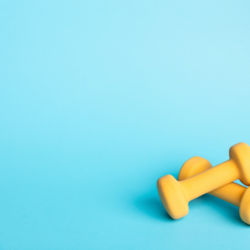Physical activity doesn’t have to be complicated. In fact, simply walking every day can help us lead a more balanced life.
Where does life energy fit in?
Haven’t you ever heard of energy? Not the energy that supplies our living spaces with electricity, fuel or the sun. Instead, we talk about the energy that flows through our veins, nourishing our entire body. This life force manifests itself when we activate ourselves. This energy gradually builds up in us from the moment we arrive on earth, only to begin to dwindle in middle age and eventually run out in old age. However, this pattern is not entirely true on closer inspection. This energy, which is still difficult to quantify or measure, does exist in our organism and our being. It is quantified when we compare it to our blood results by the sufficient presence of this or that. But, in reality, it goes beyond this conditioning.
How do I maintain my energy level?
We know that in order for this strength to be sufficient and constantly increasing, we must maintain it daily. Some people choose meditation, while others prefer fasting or prayer. Today, we know that there is a much easier and almost foolproof way to maintain our energy at an optimal level. In fact, walking is that wonderful way. Do you realise that by practising walking, you can put into practice all the functions we have just listed?
Walking: A great tool for mind and body health
All you have to do is take a walk in a natural park to free your body and mind from accumulated stress. In addition, it will allow you to feel amazed at the beauty of nature around you. Indeed, the simple act of walking can help you to enter into meditation deep. A way to take a break from the daily grind of racing against time and performance, while practicing gratitude. Regular walking leads to a natural rebalancing of the body, allowing it to face the aggressions of everyday life. As a result, in addition to eliminating accumulated toxins in the body, you will naturally feel the need to make better food choices and rest your body. Once you have established this great connection between you and your body through walking, you will discover how to evolve athletically so that you can continue to benefit your whole body. In conclusion, walking is about activating your life force!
What impact does walking have on my physical condition?
When we walk, we exercise our muscles and our joints muscles as well as the joints. Joints that need flexibility to help us get up, stand, walk… However, when stiffness sets in, it can lead to chronic inflammatory pain. Lack of physical activity can actually lead to health problems such as arthritis,osteoarthritis,osteoporosis. .. In order to avoid inflammation and pain, the muscles need to be worked. Walking is a very important part of fitness because of its many health benefits. Technological advances present us with a wide range of highly innovative products to effectively enhance the power of walking. The faster you walk, the further you go and the more frequently you walk, the greater the benefits. In fact, walking is a great way to get aerobic activity, improve your heart health and increase your endurance while burning calories. Alternating periods of brisk walking and slow walking would also be beneficial. This type of interval training has many benefits, such as improving cardiovascular fitness and burning more calories than normal walking.
What are the benefits of walking?
Regular physical activity such as walking helps the body in many ways:
- Maintenance of a healthy weight and weight loss if necessary
- Reduction of stress and tension
- Prevention of heart disease, stroke, high blood pressure, type 2 diabetes and cancer
- Optimisation of mood, memory, cognition and sleep
- Improved cardiovascular tone
- Increased muscular endurance and overall energy
- Improve your balance and coordination
- Strengthen your immune system
- Strengthening of muscles and joints
Sources: https://www.ncbi.nlm.nih.gov/pmc/articles/PMC4626390/ https://www.ncbi.nlm.nih.gov/pmc/articles/PMC4481680/ https://www.ncbi.nlm.nih.gov/pmc/articles/PMC6350957/





